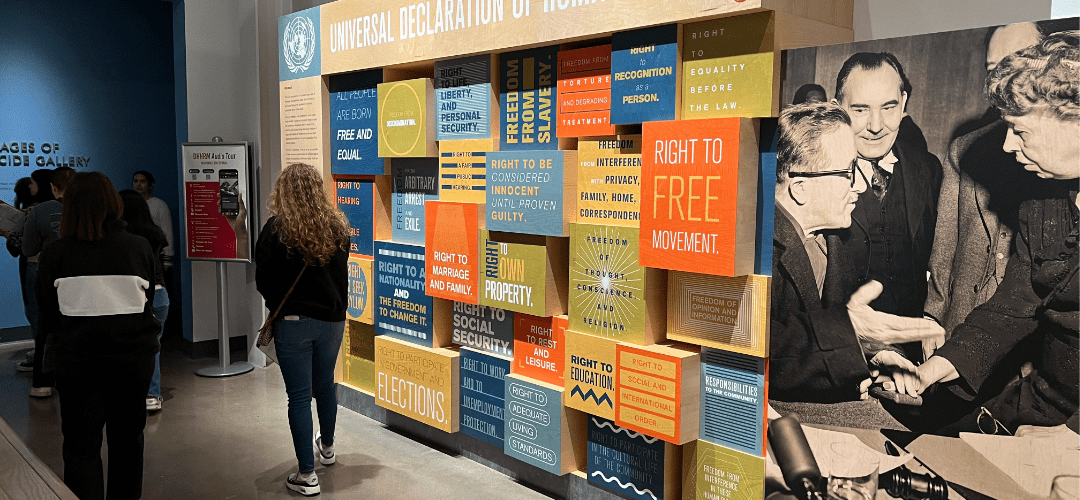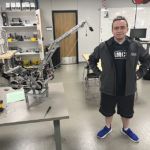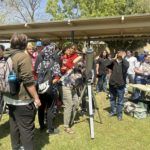DALLAS – The World War II-era boxcar that is one of the focal points of the Dallas Holocaust and Human Rights Museum is tucked behind a wall, separating the part of the museum dedicated to Adolf Hitler’s rise to power from the one detailing his actions later in the war. Museum visitors often pass through the boxcar, which stands as a solemn reminder of this part of global history.
For the second year in a row, some of the museum visitors were students in Abilene High School students in Jennifer Jordan’s Holocaust and Genocide Studies class. Those students – joined by Jordan, AHS principal Emme Siburt, librarian Kate Stover, and AISD Board of Trustees president Daryl Zeller – toured the museum on Monday, March 18.
The group from Abilene High met with two docents before reaching the boxcar, including Dr. Joel Roffman, a retired Dallas-area cardiologist now in his fourth year as a museum tour guide.
“Going through the boxcar is the most heart-wrenching part of the tour,” Roffman said, “which is why I encourage everyone to watch the video that plays while they’re inside. It gives them an idea of what the Jews were up against. They had no choice but to get on the trains that were carrying them to their death.”
As Roffman told the students, large groups of Jews were herded into these boxcars and forced to stand without amenities for days at a time. Those riding in the boxcars experienced inhumane conditions at all times.
All of that was going through the mind of Abilene High junior Adene Tilahun as she stood waiting to walk into the boxcar, which, according to the Dallas Morning-News, was built in Germany and sent to Belgium as part of World War I reparations. After invading Belgium in 1940, Hitler’s forces seized the entire rail system, including the boxcar on display, for military use.
“Before I went into the car, I was nervous because it’s a lot to process,” she said minutes after standing in the middle of the boxcar. “While we were in there, there were only about 50 of us, but I still felt a bit claustrophobic, and I couldn’t comprehend what it would have been like to be in there when it was packed and dark with the odor that goes along with that many people crammed into that space for that long.”
It is a humbling reminder of the struggle of the Jewish people during World War II.
“Going through that boxcar is pretty surreal,” Zeller said. “We have no concept of what the people herded into those cars experienced, and what we experienced (Monday) was just a small glimpse. We see all of the things in the museum: the boxcar, the luggage, the shoes, the jewelry; the items that were taken from people who were killed, and it’s very humbling.”
Roffman sees each day how much the museum humbles those who visit the exhibits and sometimes weep at the stories they were told by their parents, grandparents, or other relatives or friends. He had the opportunity last year – and earlier this week – to give a guided tour to Dallas-area Holocaust survivor Magie Furst, who was born in Germany in 1929. In 1939, she and her brother were selected as part of Kindertransport, a rescue mission that moved around 10,000 children out of Nazi-occupied areas in Europe. They hid and lived with strangers in England until the war ended.
Furst is a reminder to Roffman that neither the brutality of the Nazis nor any human rights violation should be allowed to stand.
“I stress to every student group that, yes, it was Jews in the 1930s and 1940s, but it could have been anyone or any race,” he said. “We should all be equal and treat each other as such. And we should all strive to combat hatred and discrimination and the indifference that goes along with it. We have to fight it in every way we can.”













